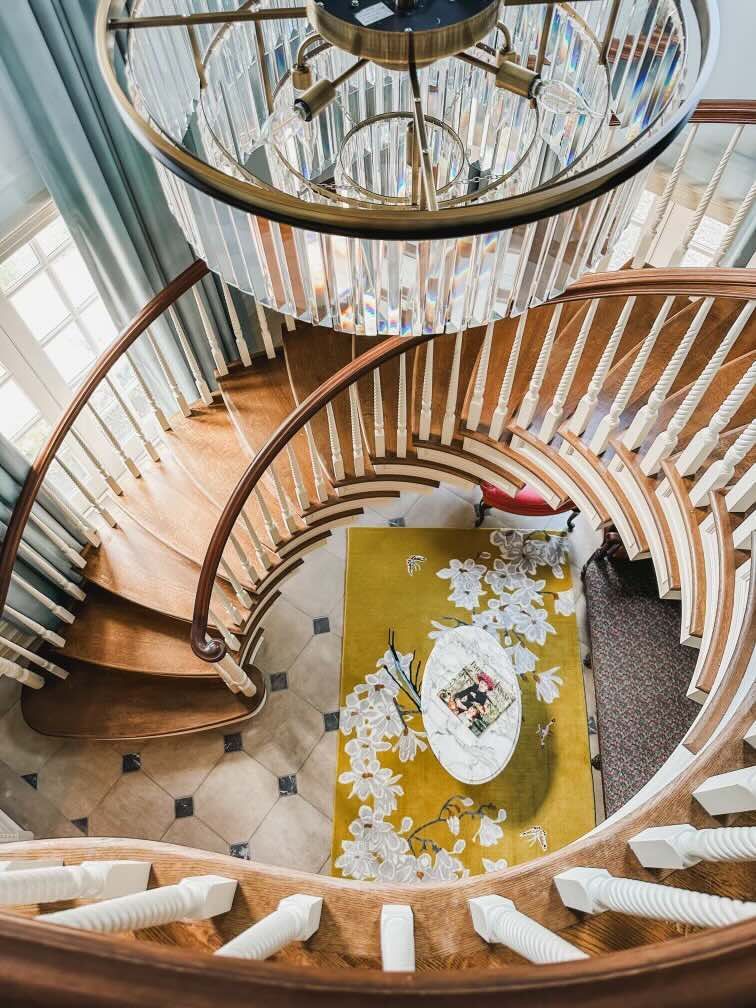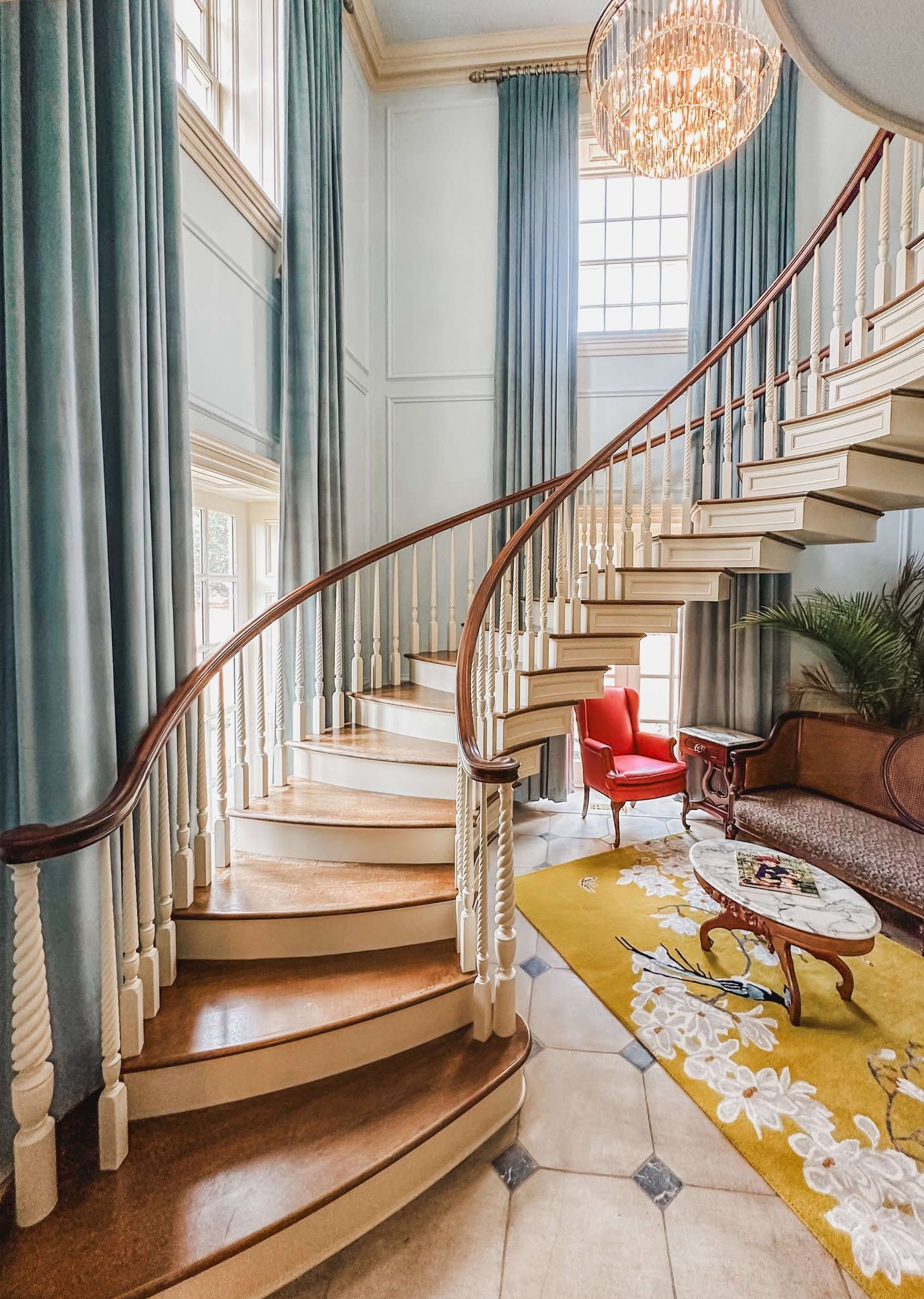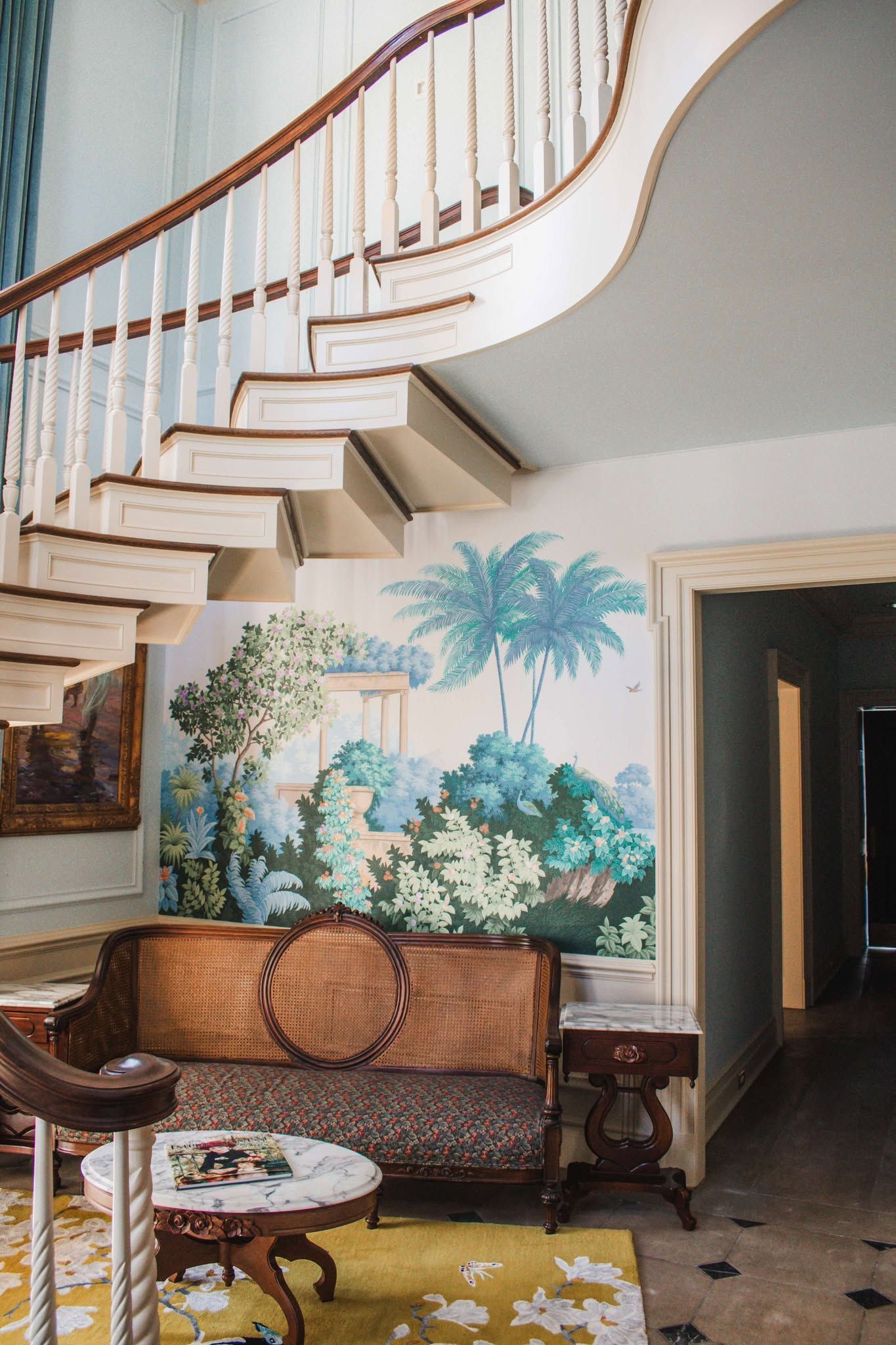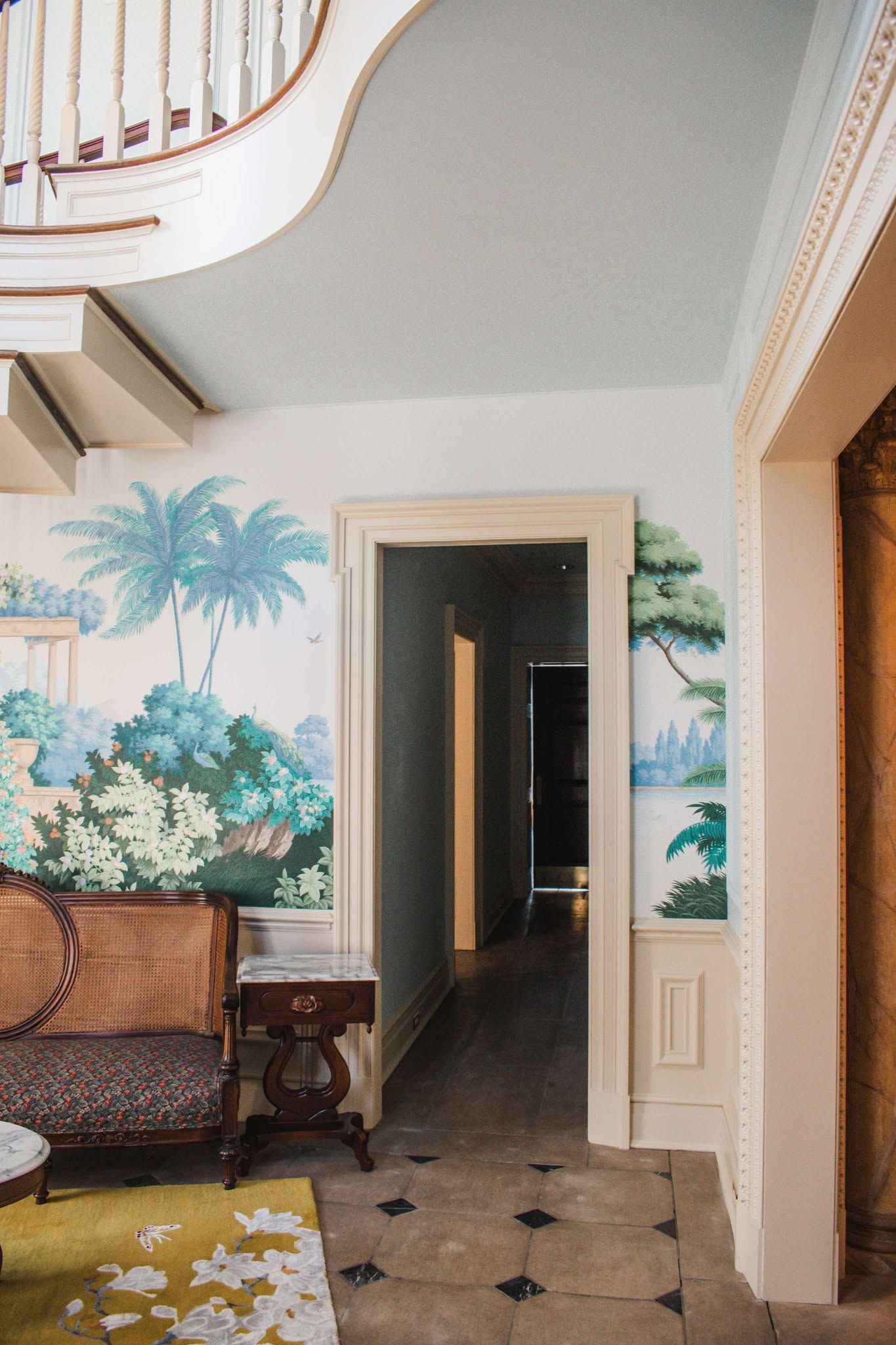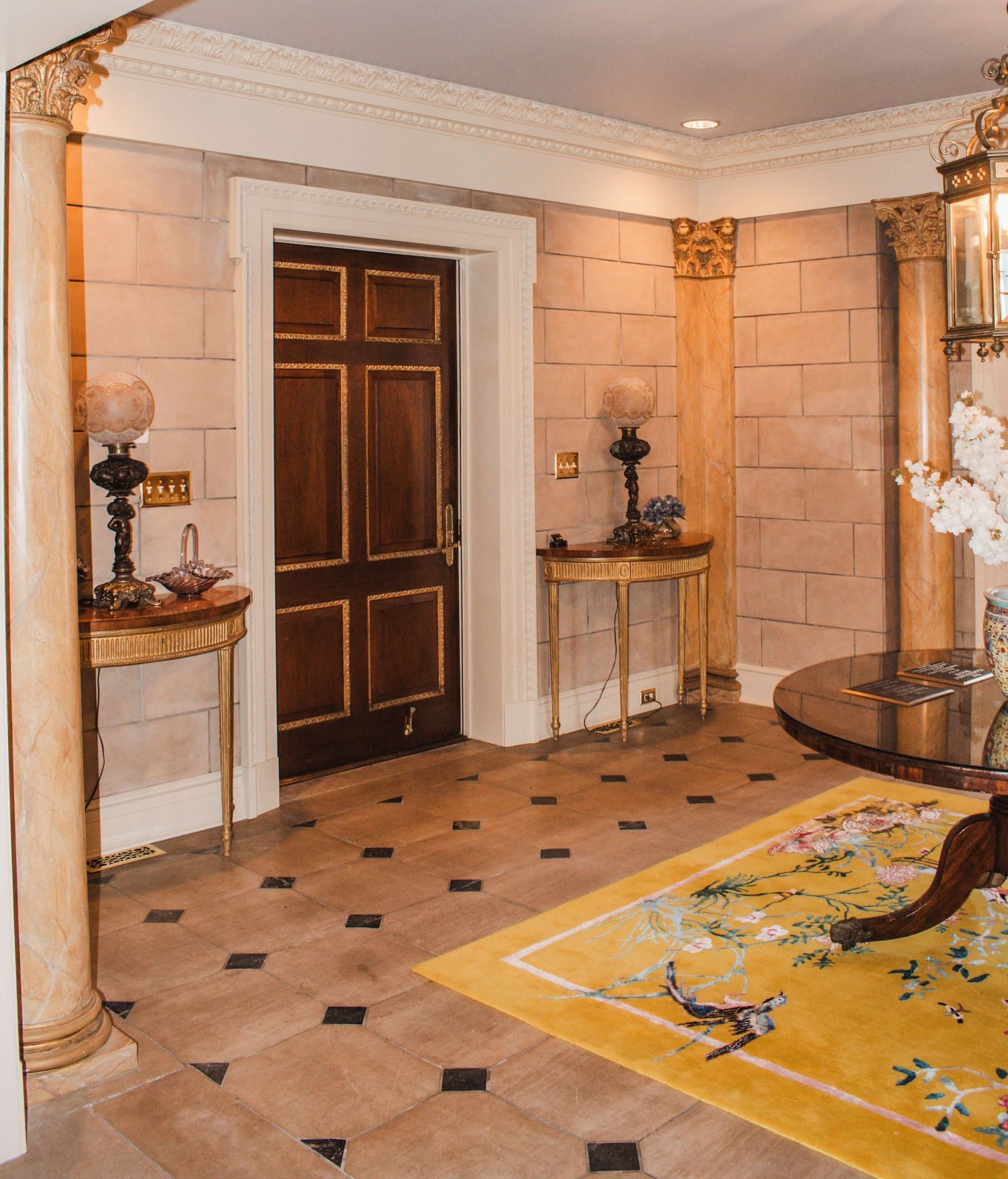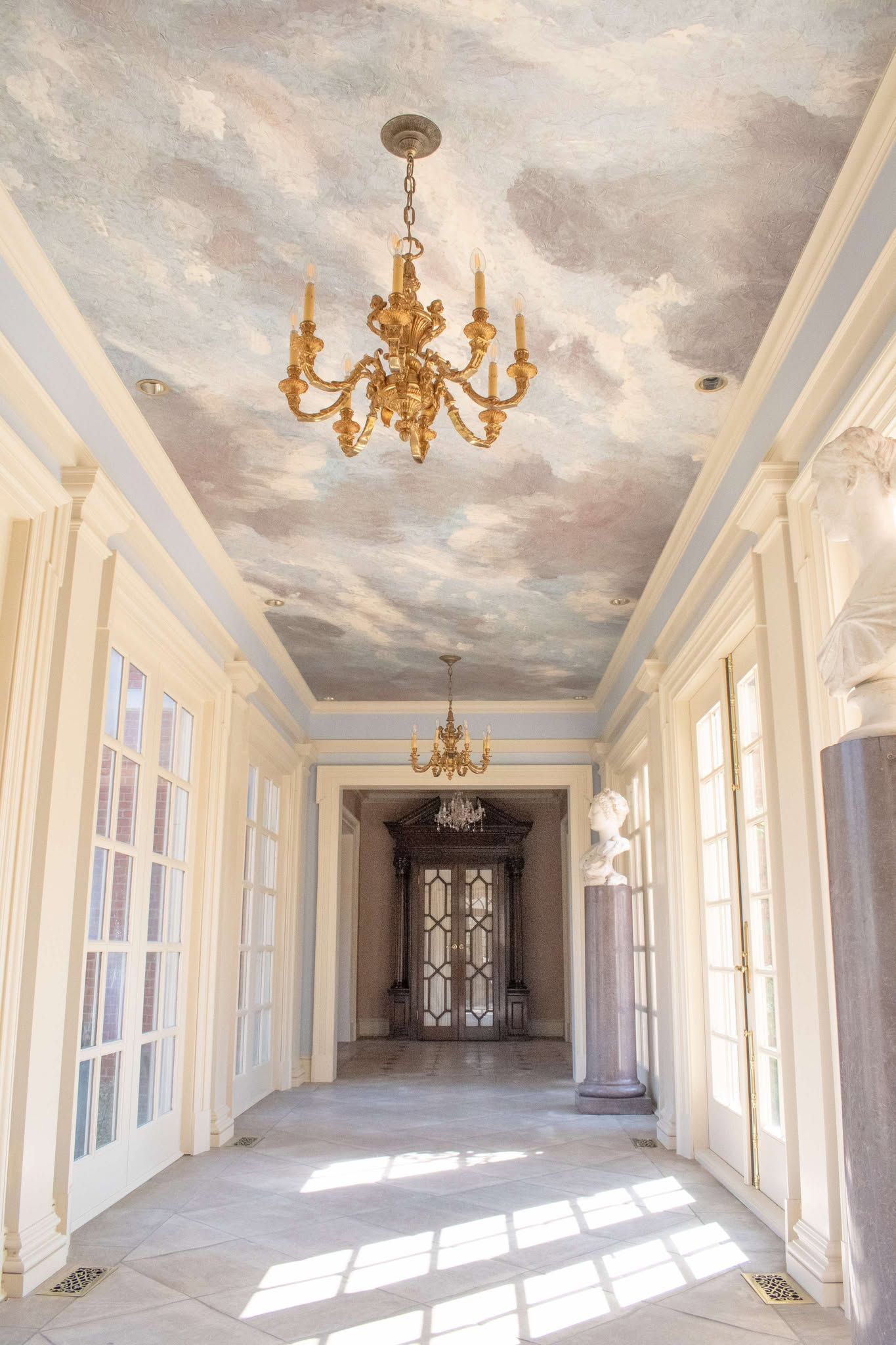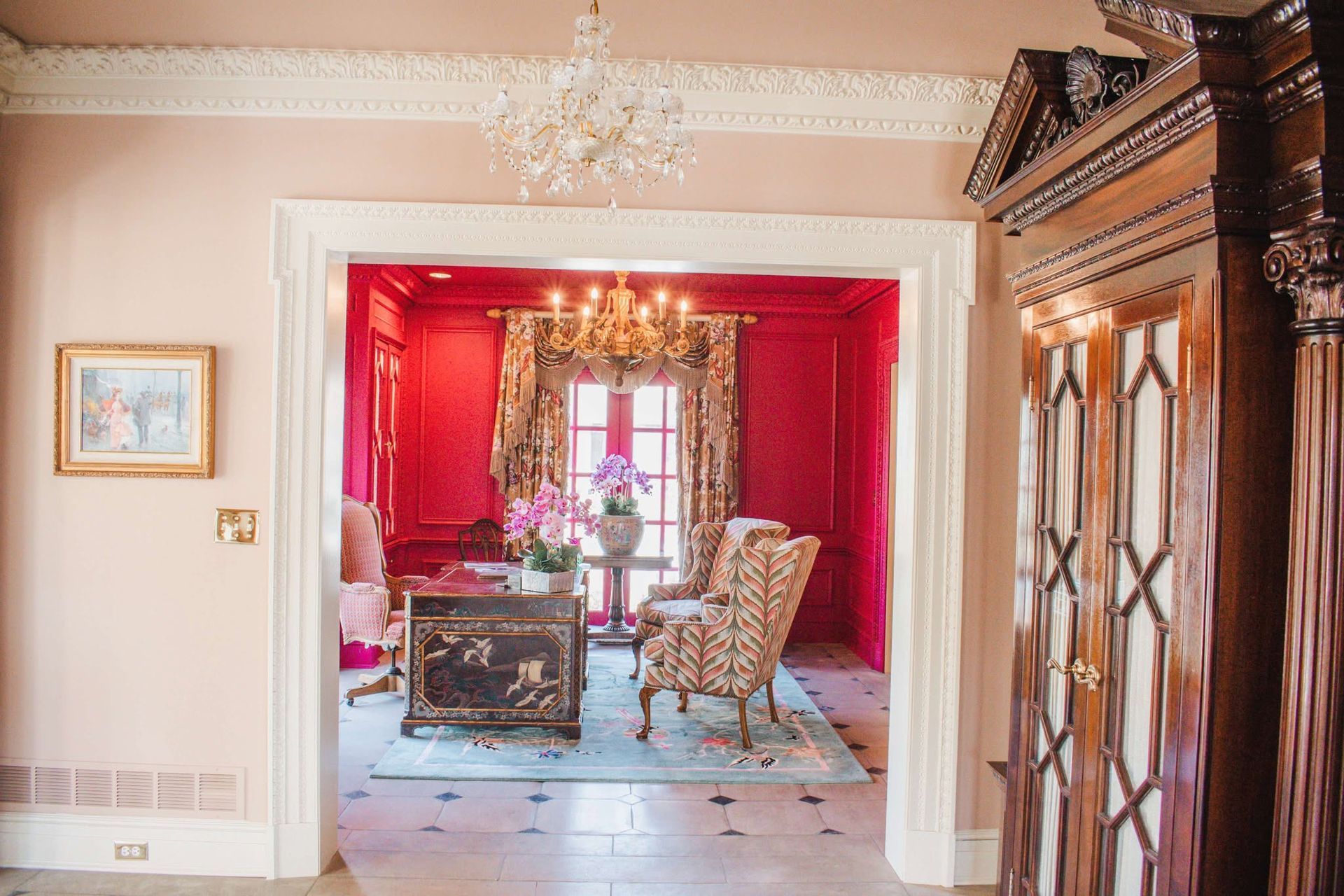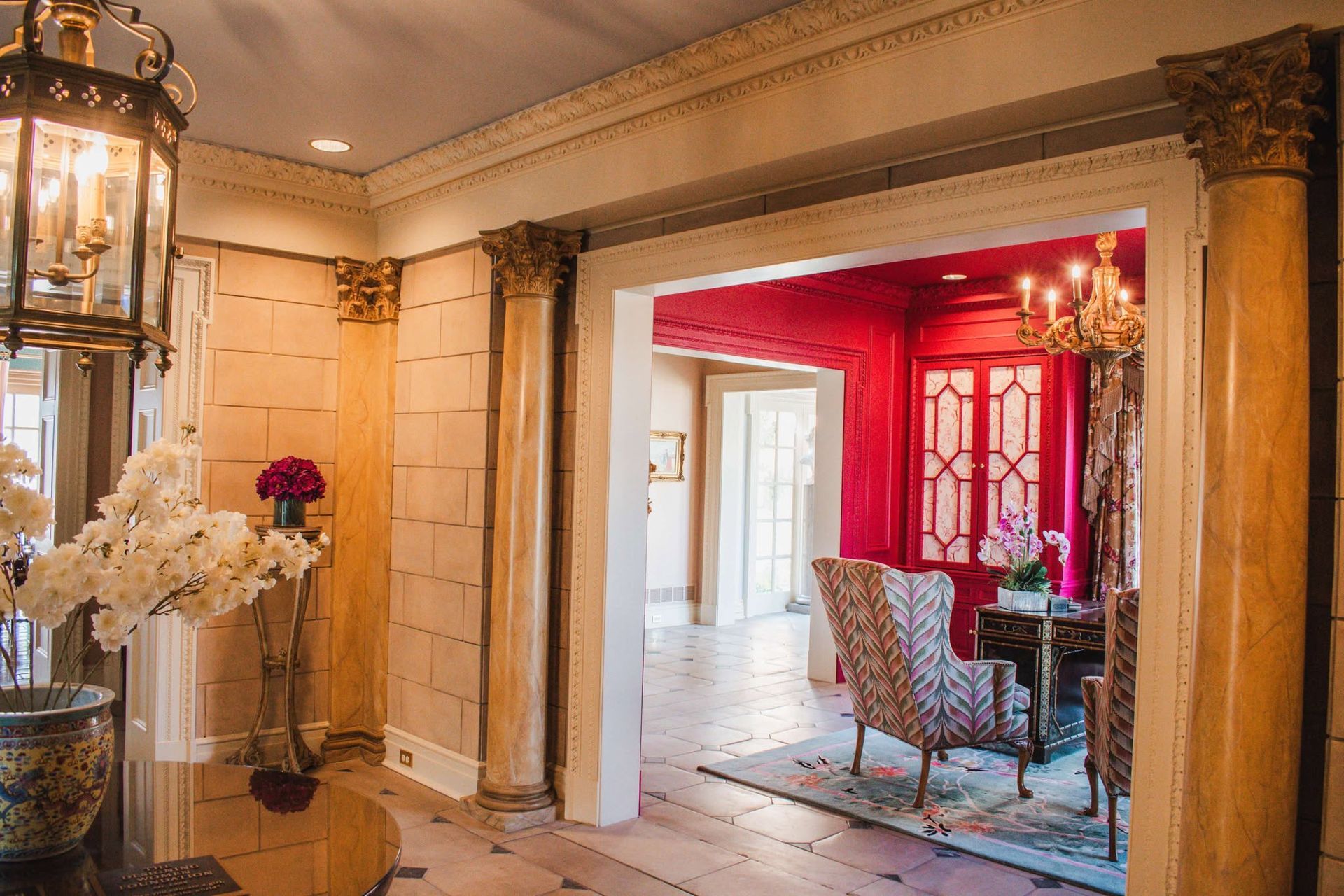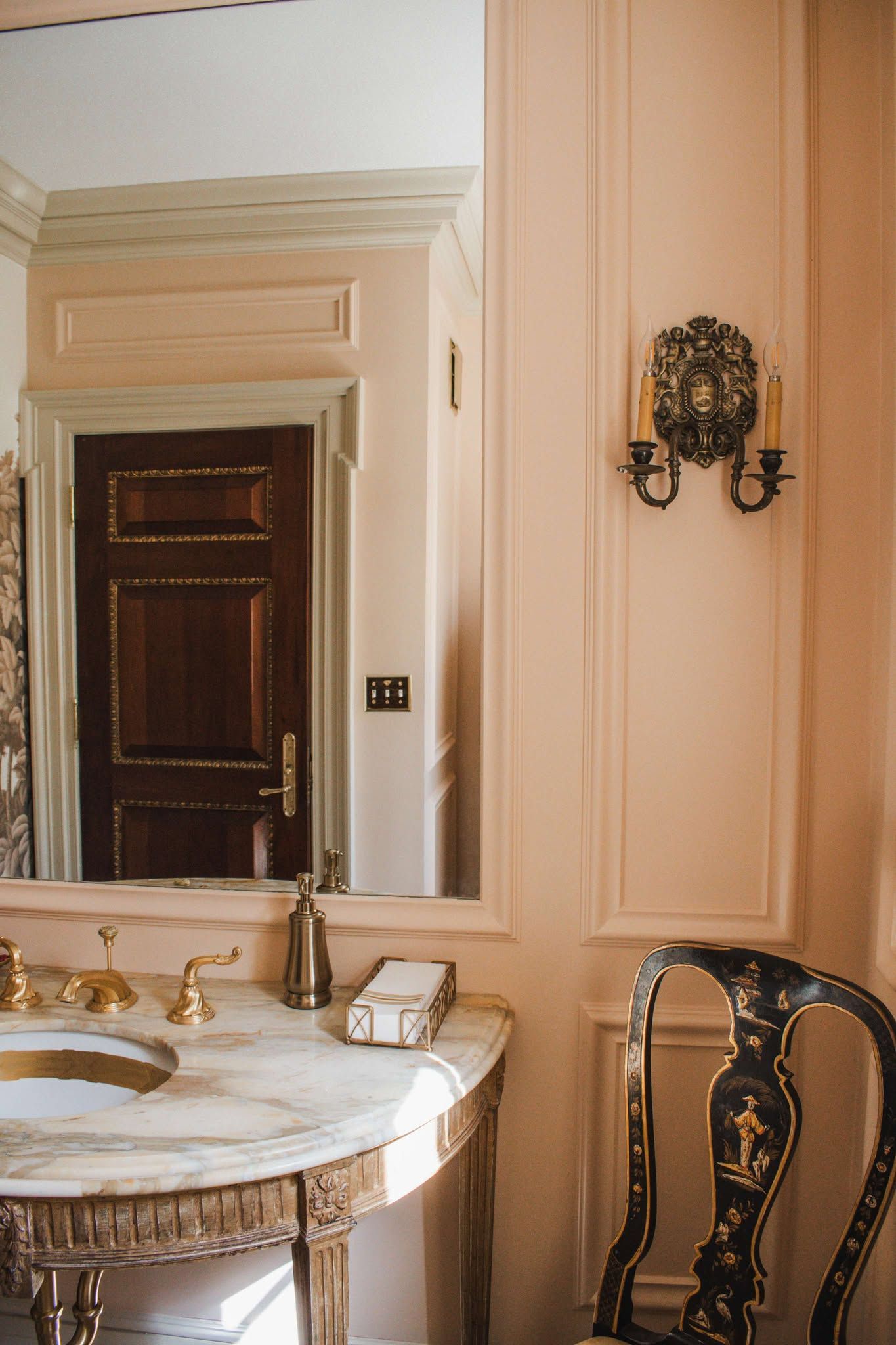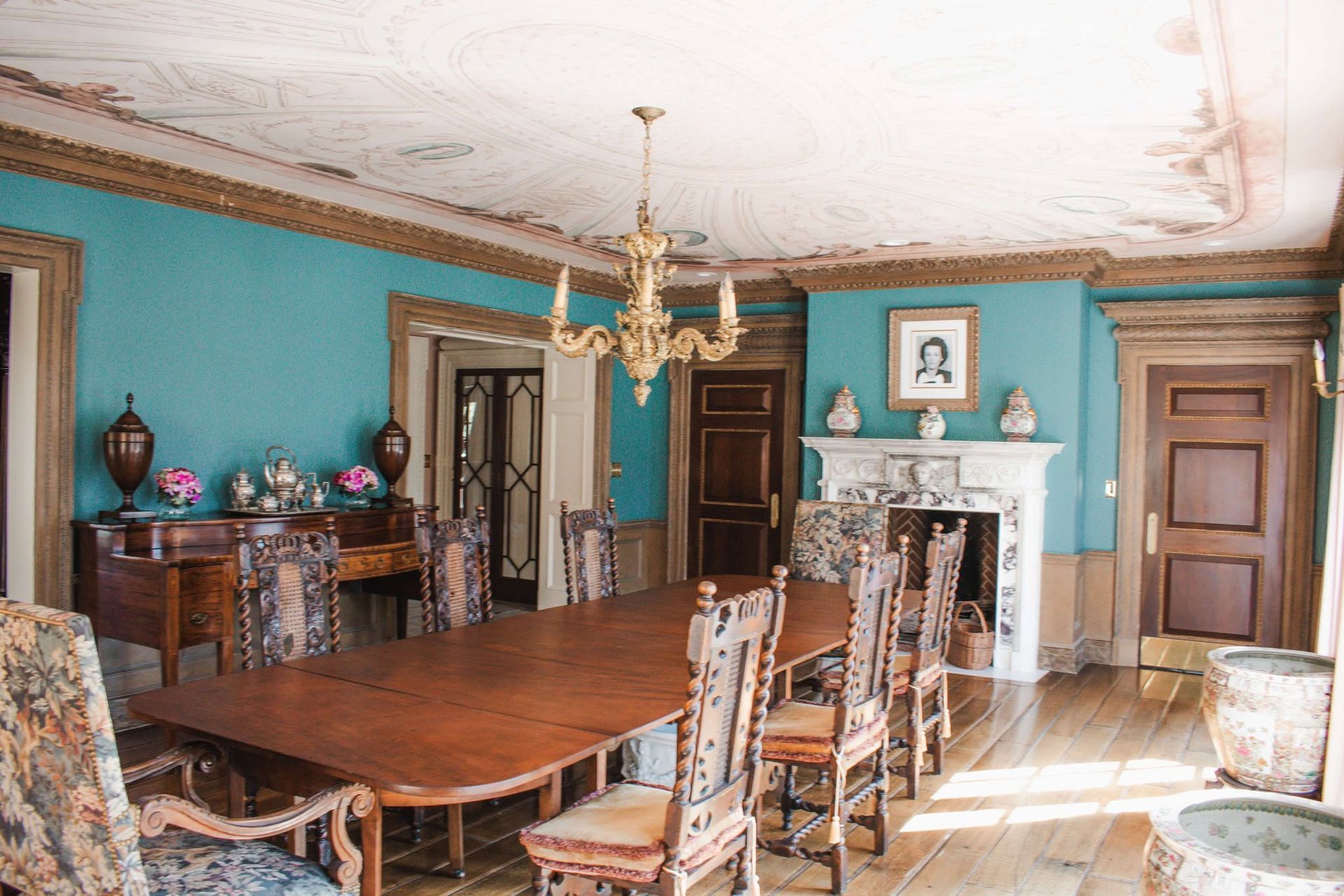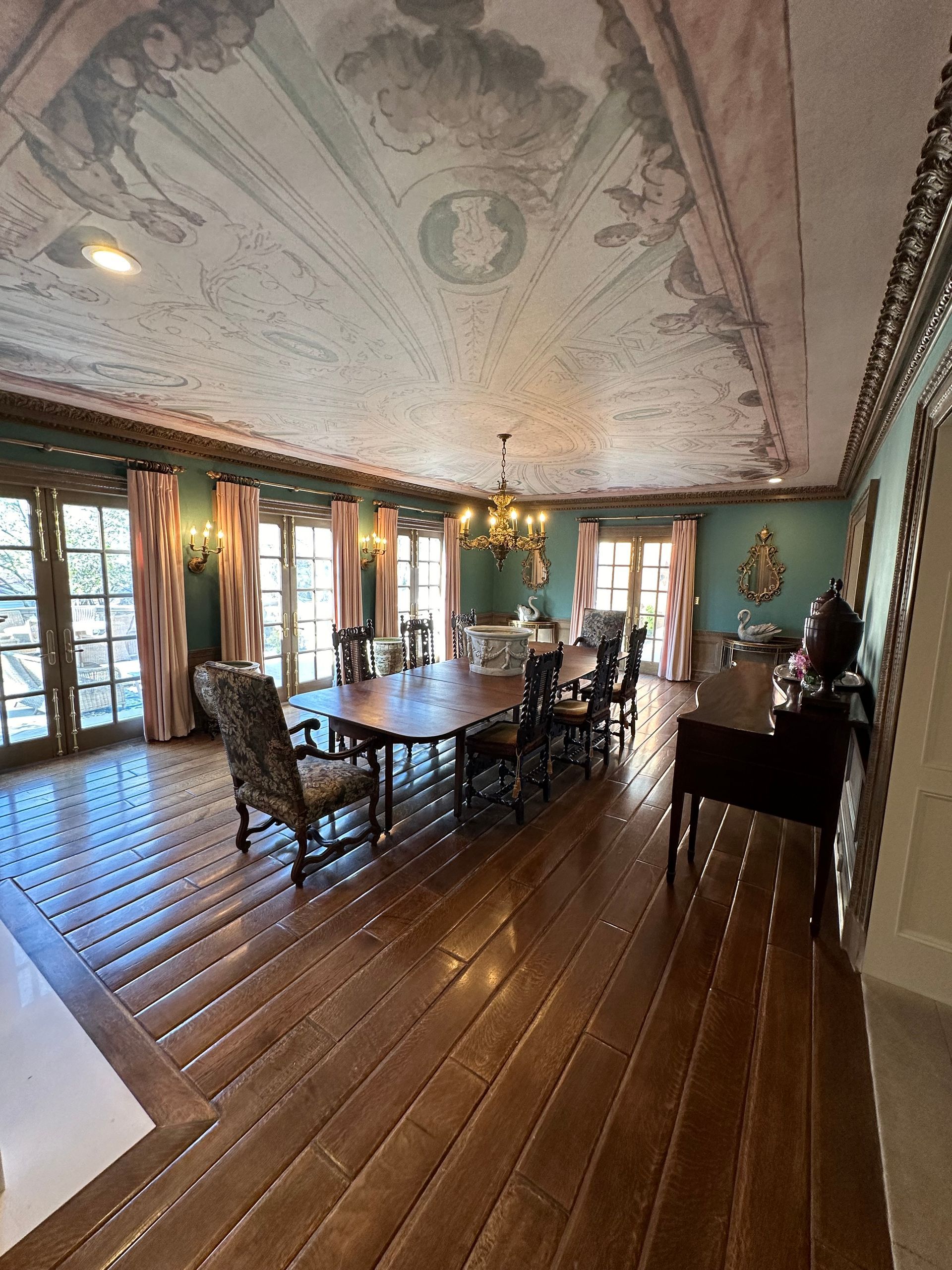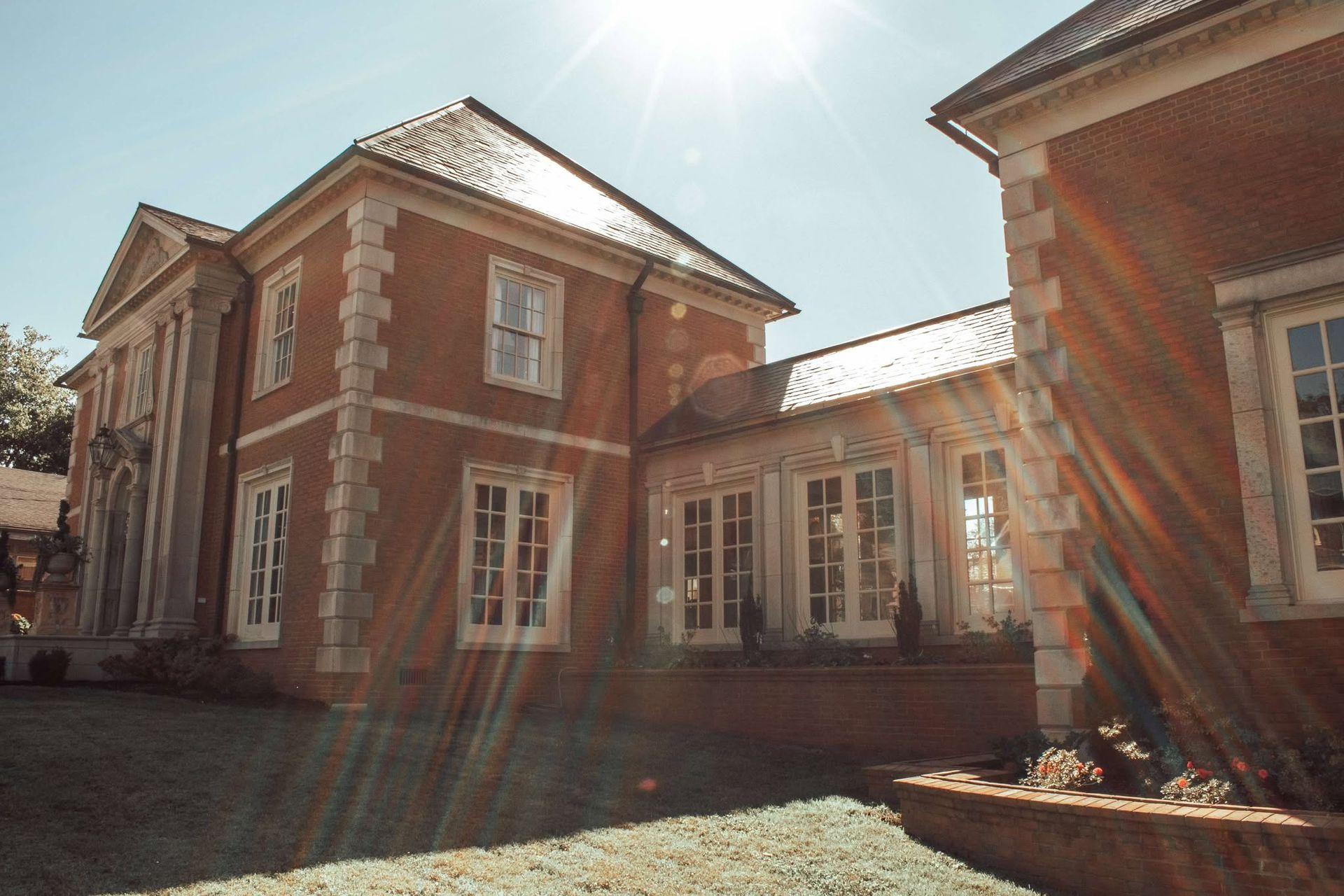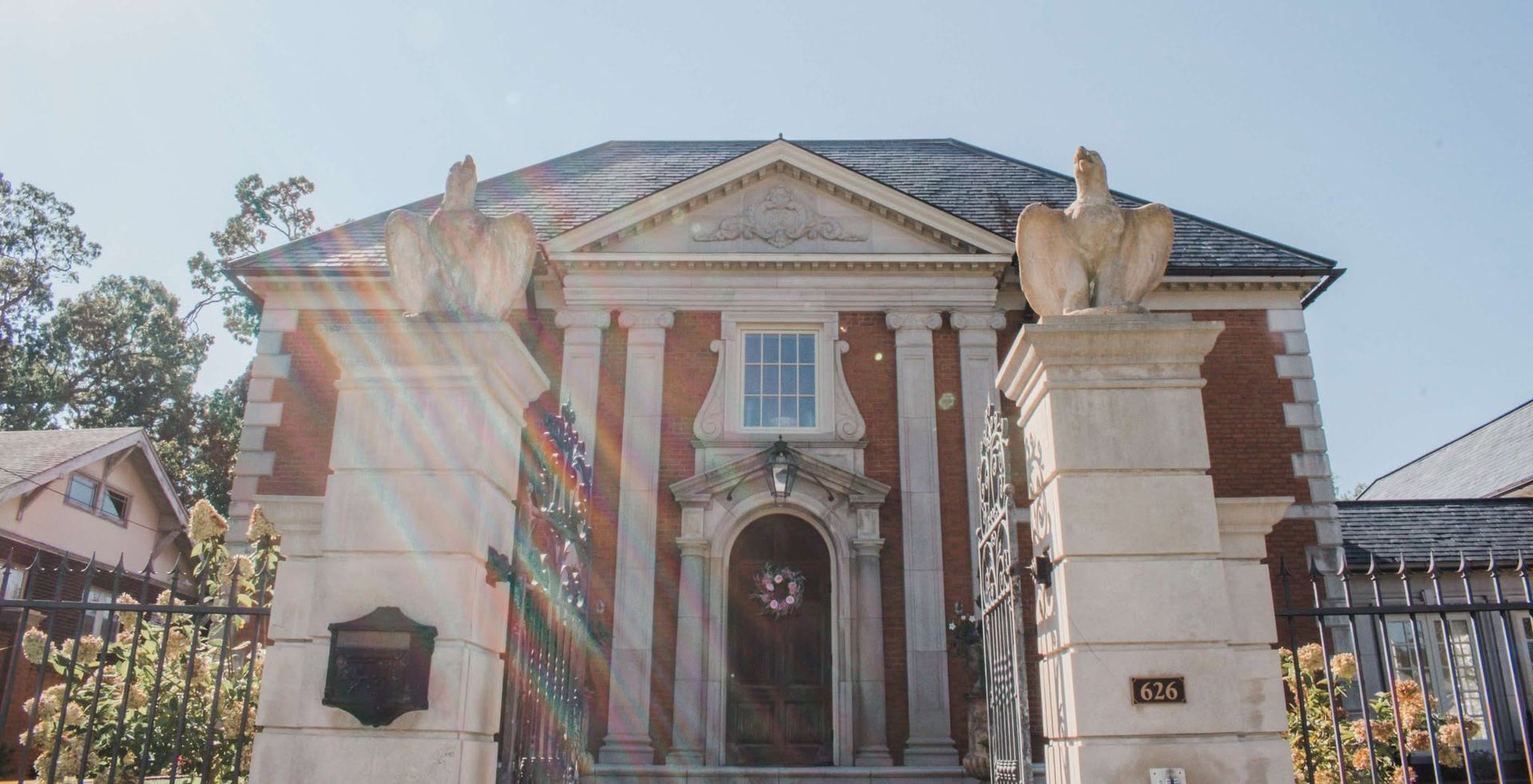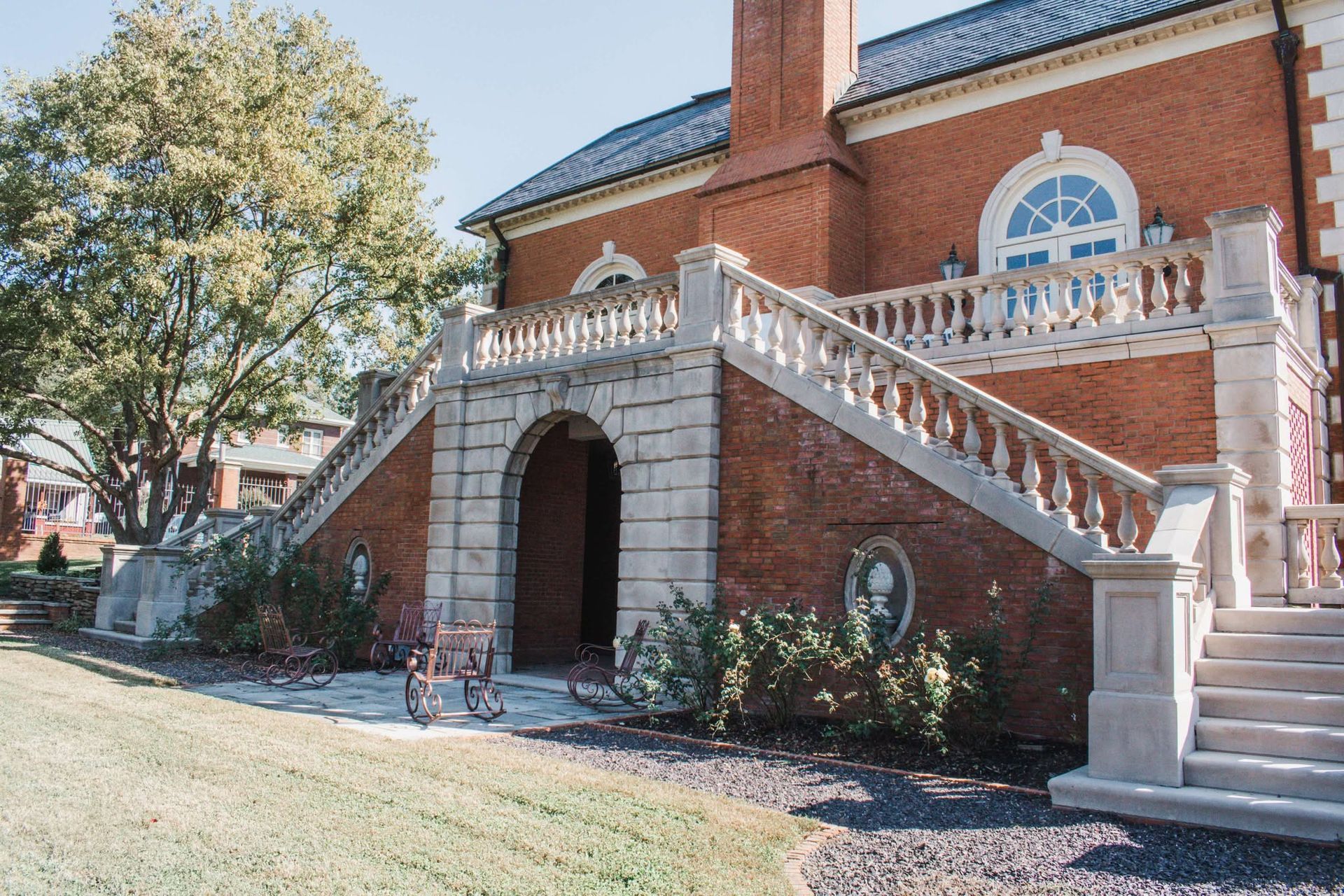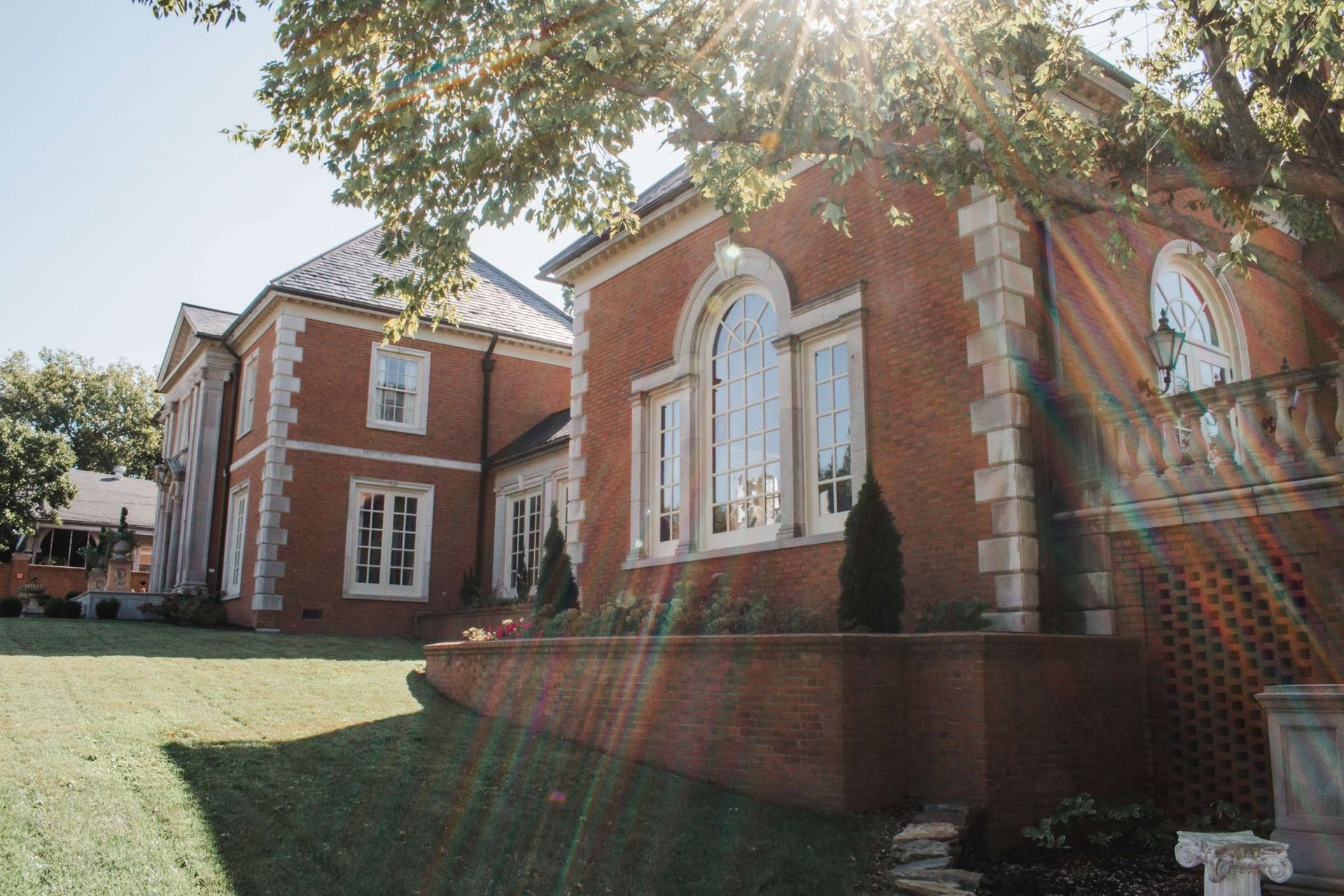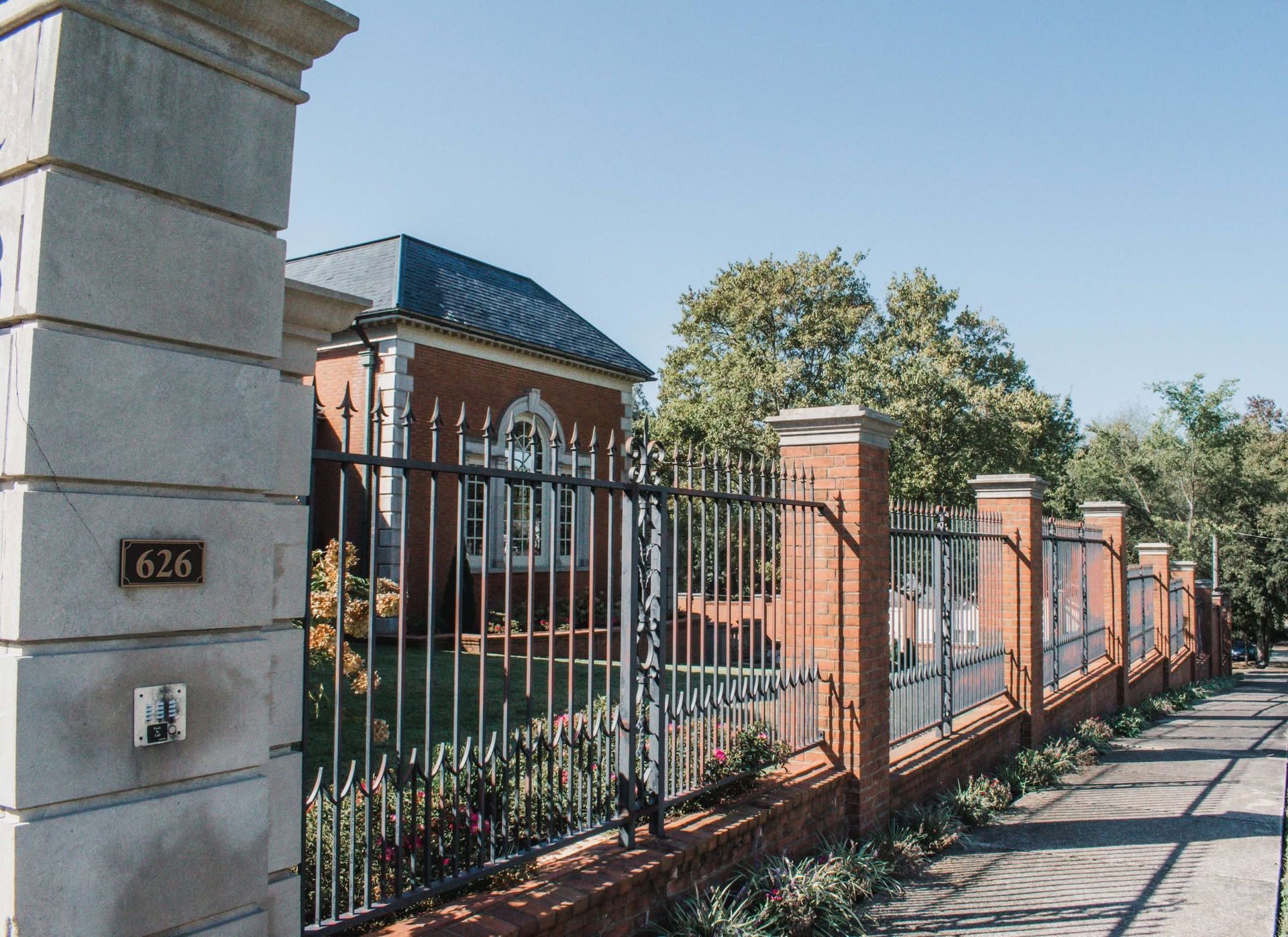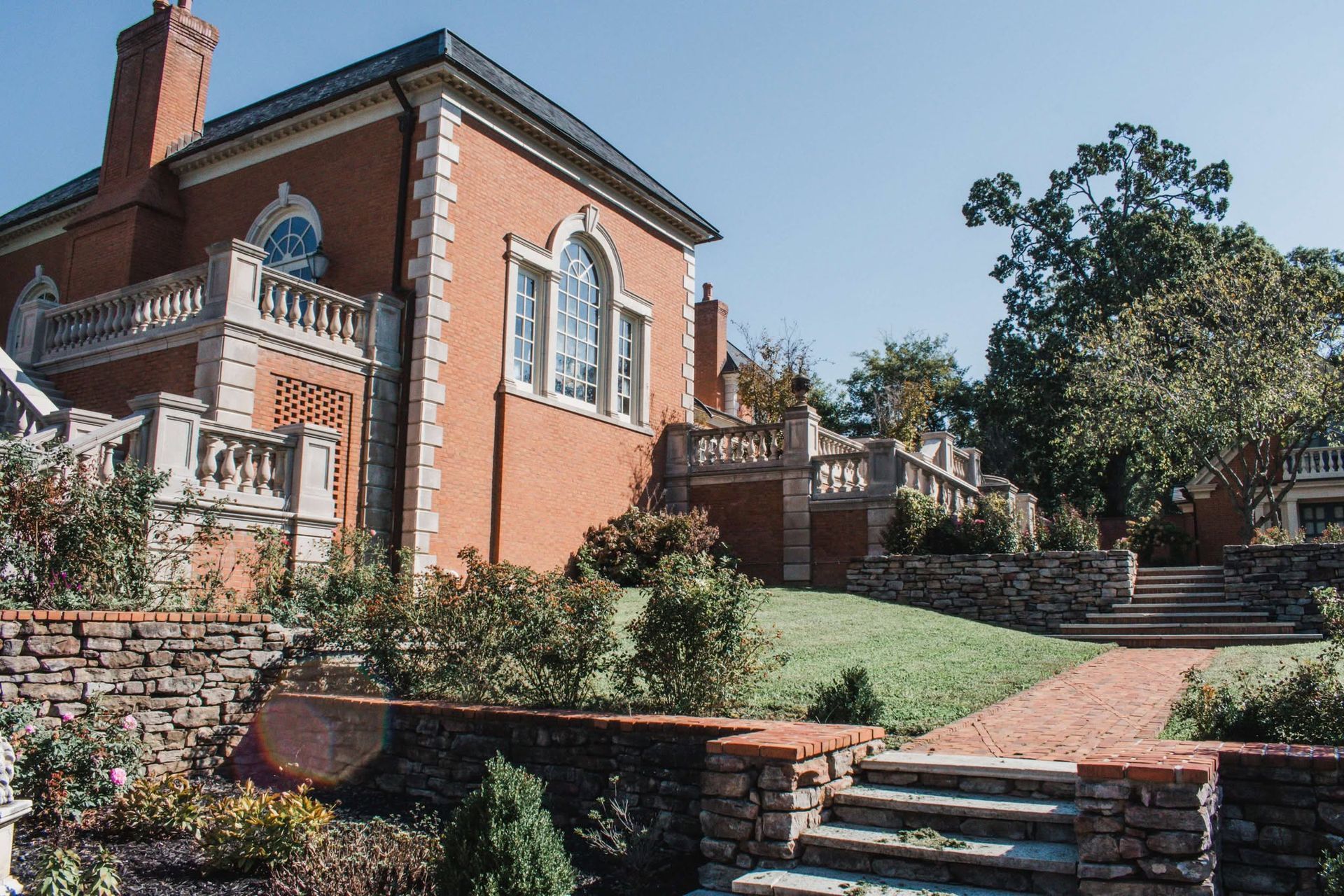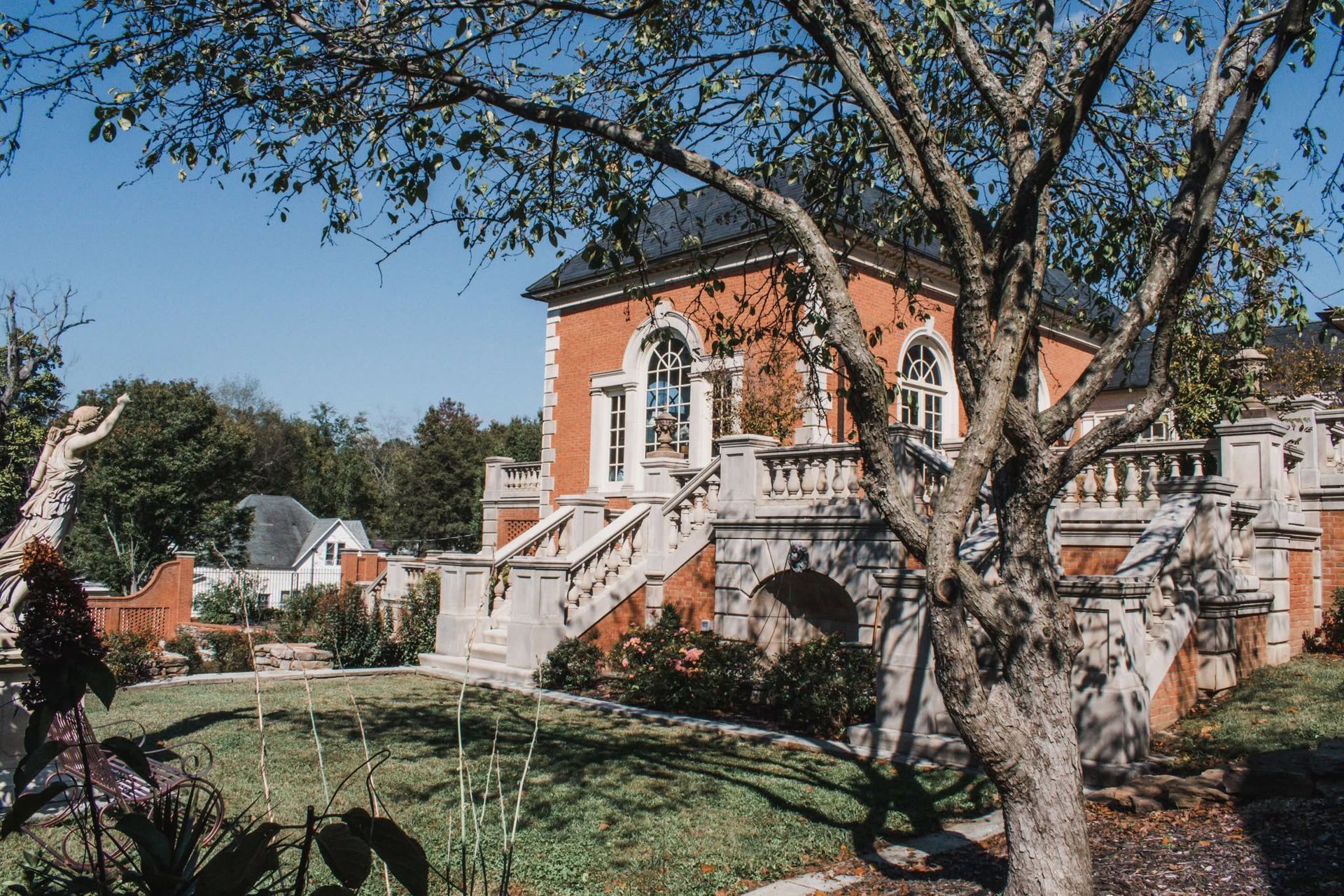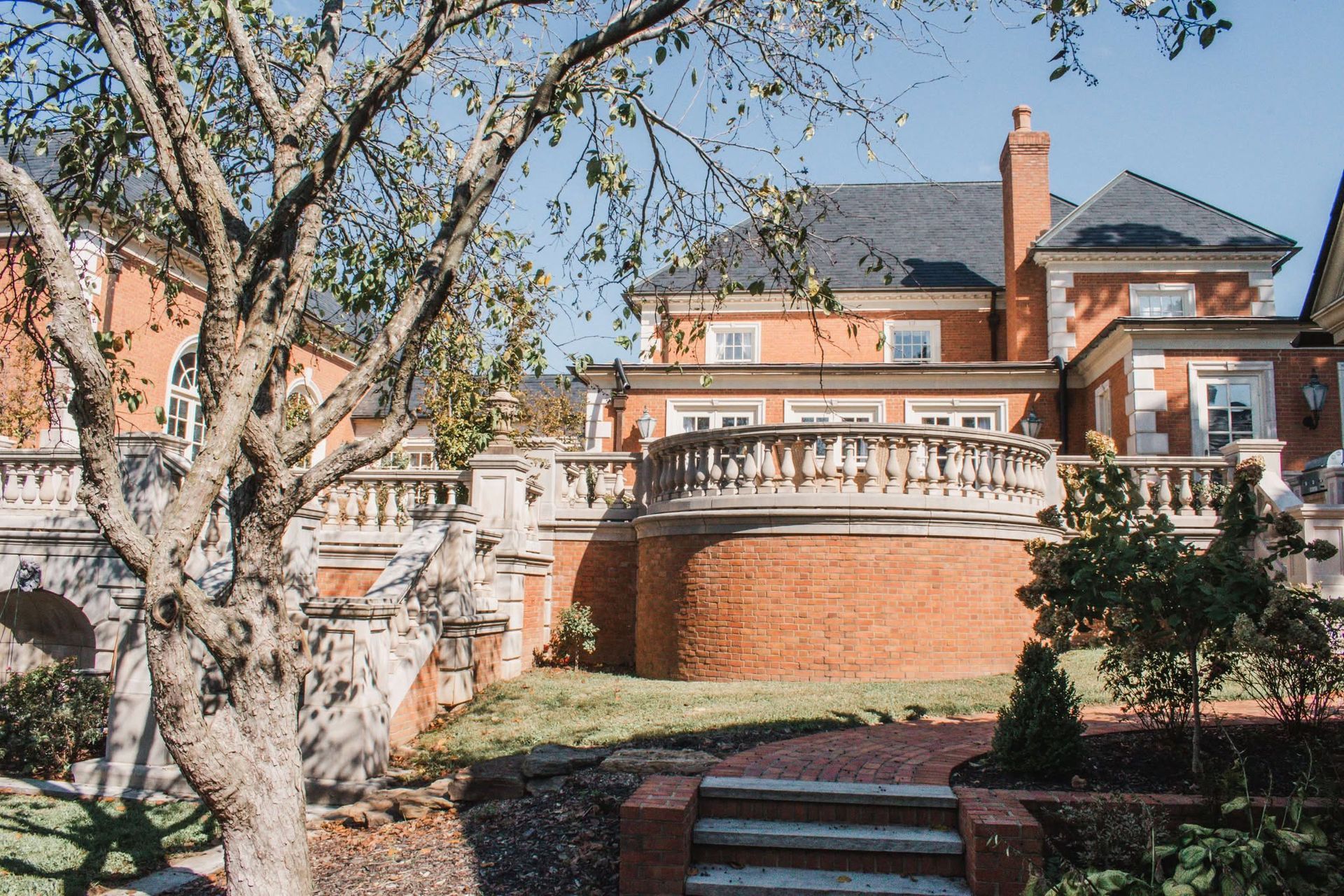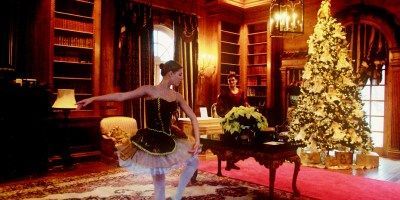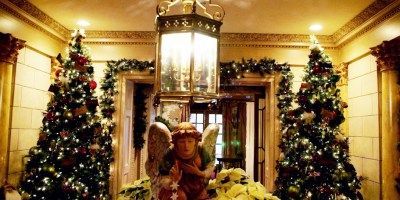History
The Bloodworth House
The house was originally built in the early 1900s and was purchased three decades later by Linda Bloodworth Thomason’s grandparents, Charles Thomas “C.T.” Bloodworth and his wife, Effie Belford Bloodworth. In 1992, LBT commissioned a renovation of the entire property under the stewardship of well-known Memphis designer William R. Eubanks. A massive library, dining room, and three-tiered veranda were also commissioned to complete the property. However, LBT ensured that the home would always remain ensconced within its old brick walls—this, in recognition that it was once a magical and happy place for the family that lived there.
The Family Who Lived There
In 1934, Linda’s grandfather, Charles T. Bloodworth, relocated his large, cantankerous family from Corning, Arkansas, to 626 Cynthia St. in Poplar Bluff, Missouri. As a boy, Charles, in order to help support his family, was not allowed to finish sixth grade. But fortunately, he was a voracious reader and eventually managed to clerk under an Arkansas judge and earn a law degree. After starting his own firm, he was soon elected as a representative to the Old State House in Little Rock and subsequently served as editor of the Clay County Courier in Corning.
Death threats soon became a way of life, with the Klan threatening to kill his wife and children and burn their house to the ground. But Charles refused to capitulate. At 6’4”, he was a very imposing man (even Effie called him Mr. Bloodworth). His four sons began routinely guarding him wherever he went. As their granddaughter, LBT, recounts the story (related to her by her father and uncles):
“It was wild, Even my sweet grandmother, who wore a perpetual apron and was president of The Eastern Star, had to learn how to shoot a gun. All the boys remember the day the Governor of Arkansas showed up on a peacekeeping mission, in the middle of a standoff, waving his hands and yelling, ‘Don’t shoot, don’t shoot, it’s Governor Futrell!’”
One day, a carload of Klansmen caught up with Charles, who was uncharacteristically waiting alone at the Corning train station. They let a local woman out of the car, who proceeded to run up and shoot him point-blank in the chest. Miraculously… he survived.
“I’ve always imagined that house as bursting with life, like an old ’30s movie, with those four irrepressible boys running up and down the stairs and my Aunt Helen pounding the piano. As a little girl, I remember my grandfather sitting in his big easy chair, smoking his pipe (impeccably dressed in a suit and tie—he had no casual clothes), and my grandmother happily canning in the kitchen (she always smelled like peaches).”
The four Bloodworth sons—Haskell, Charles, Ralph (my dad), and Howard—would go on to put themselves through law school (supplemented by playing poker) before heading off to World War II. In keeping with my grandfather’s stubborn commitment to a righteous fight, Uncle Howard served with Patton in Africa, her father became a Japanese war crimes prosecutor, and Uncle Charles, a judge advocate at Nuremberg. He brought home one of
the only three handwritten transcripts from the Nuremberg trials, which now resides at the University of Missouri.
“These guys were known for being astute, courtroom orators, and raconteurs. I can still see them sitting on the edge of my grandmother’s old davenports, debating everything—politics, religion, and especially the law, and always with whiskey glasses clinking. On some nights, over the protest of others, somebody reciting a far-too-long passage of Longfellow or Tennyson.”
“When my grandfather passed away, he left me all of his books. It was very moving to discover that the little boy who never got to go past sixth grade had conquered the complete works of Thackeray, Shakespeare, and Dickens. For years, I kept his photo on my nightstand, which he had inscribed with the words, ‘Remember Me.’ As if I could forget him. Not only did he inspire me to use the pen to stand up for my beliefs, but his four sons literally dazzled me with the power and musicality of the English language. These are the men who made me a writer. Few things have made me happier than finding a way to honor them.”
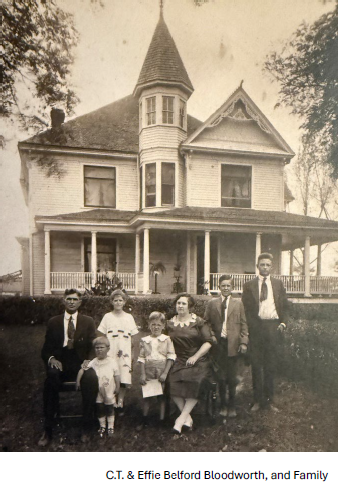
The Library that Crowther of Syon Lodge Built
As Linda Bloodworth Thomason recalls, “In 1991, I decided to call up the Queen’s 400-year-old architectural firm, Crowther of Syon Lodge (renovators of the war ravaged Windsor Castle in the 1660s), and ask them a question, ‘Would they possibly consider building a huge, English library (The Bloodworths are from England) and attach it to my grandma and grandpa’s house in Poplar Bluff, Missouri?’ The clipped British voice explained to me that they had no idea where Missouri was (or for that matter the Ozarks) but politely offered to look it up.”
Unbelievably, though they were in the middle of rebuilding the newly fire-ravaged Windsor Castle, they accepted my offer. That was the beginning of a yearlong odyssey, which would see them fashioning rows of beautiful hand-carved, Scottish Pine panels, along with several thousand feet of reclaimed Belgian White Oak floors. After its completion, the Brits carefully deconstructed their creation, painstakingly packing it into shipping containers and sending it across the pond. Upon its arrival, at the Port of New Orleans, the containers were then loaded onto several large barges and taken up the Mississippi River, before finally arriving a week later in Cape Girardeau, Missouri, where they were then reloaded onto eighteen-wheelers and driven to their new home in Poplar Bluff.
The English carpenters and artisans soon followed and spent six months reassembling the massive structure. They were immediately adopted by town pillars and Bloodworth House aficionados, Guy and Evelyn Whitworth, who lavishly celebrated them, introducing them around the community and making sure they felt warmly welcomed.
It must have worked, as several have come back over the years to visit (with one of them calling it as “the best adventure of his life”). Some of the locals, for their part, remain amused to this day that in typical English fashion, the Brits got dressed up in their Sunday best suits and ties in honor of meeting the mayor.”
Today, their improbable masterpiece is known (in size) as the largest personal library in the southeastern United States. But more important to the woman who commissioned it, is the fact that “it provides a proper home for all of my male ancestors' beloved law books.” The physical Bloodworth and Bloodworth Law Office closed in 2012, with my brother, Ralph R. Bloodworth, Jr., and cousin Judge John Bloodworth being the last to helm the original firm. But happily, there is now a third generation of legal eagles who have proudly joined the spiritual incarnation of Bloodworth and Bloodworth (bringing the total membership to eleven and counting). They are Illinois Judge Ralph R. Bloodworth, III and malpractice attorney, Jill Womack Bloodworth, who celebrated their engagement in the library, and recent USC Law School graduates, John Joseph Bloodworth (senior editor of USC Law Review) and Kelsey Falkenberg Bloodworth, who wed there in the fall of 2022. No doubt, with both occasions setting off a flurry of clinking, whiskey glasses in barrister heaven.
Today, the library serves not only as a cultural, civic, and educational hub for the surrounding community, but also provides an extraordinary venue for weddings, birthday and family celebrations, and even fundraising concerts given by Hollywood stars like Dixie Carter, Leslie Jordan, and Lily Tomlin.
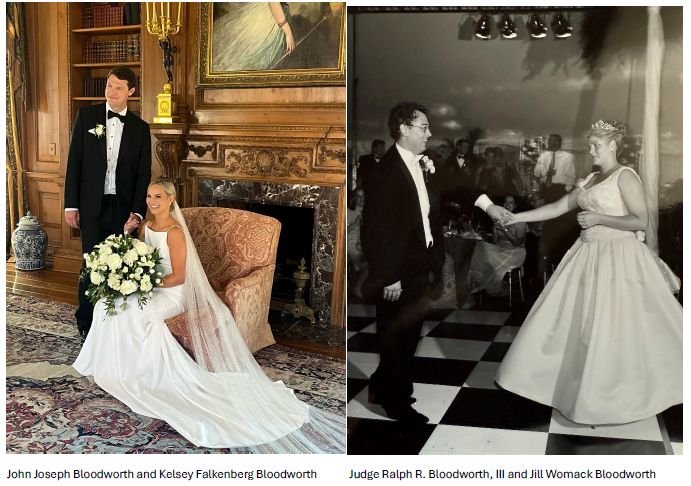
Today, the library serves not only as a cultural, civic, and educational hub for the surrounding community, as well as provides an extraordinary venue for weddings, birthday and family celebrations, and even fundraising concerts given by Hollywood stars like Dixie Carter, Leslie Jordan, and Lily Tomlin. It is also recognized as the brick and mortar heart of all of our charities.
The Claudia Foundation
“In the middle of writing and producing the television series, ‘Designing Women,’ I founded The Claudia Foundation in memory of my mother, Claudia Celestine Bloodworth, who died of AIDS (acquired through a blood transfusion) in 1986.” As LBT explains in her memoir, “Scrapbook,” “It’s true the men in my family made a writer, but my mother, along with my husband, is the love of my life.”
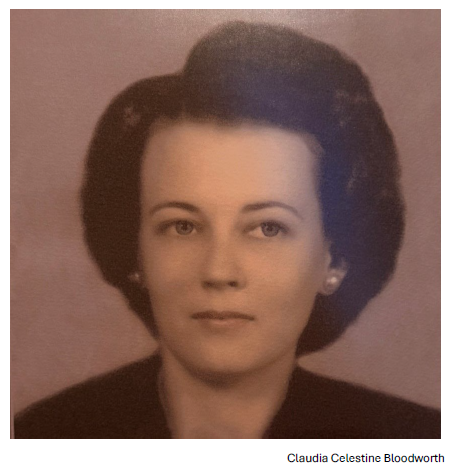
“She was as beautiful as her name – soft, feminine, stylishly turned out and unflappable. We started out together, in the little carriage house with my dad and brother, at 626 Cynthia. From my earliest memory, I adored her. I thought she looked like a movie star. Even during my five-year-old, Tomboy phase, running through the neighborhood shirtless with a posse of boys, I often completed my look with a string of her pearls. She possessed a first-class temperament; she was somehow regal and warm. I know it must have happened, but I cannot recall ever having a fight with her.”
“When my grandmother, Effie, initially opposed her marrying my dad (because she wasn’t a college girl), my mother never uttered an unkind word. She simply went ahead and married him anyway and then proceeded to hold her own with the Bloodworth clan for the next forty years.”
“Being sisterless and having lost her own mother at an early age (and then gaining an oppositional stepmother), I think my mom had a great longing for female comraderie. She absolutely reveled in having a daughter of her own. If I did well in school or a dance recital or simply made her laugh, she was a reservoir of ‘Atta-girls.’ If I was down or troubled, she showered me with unconditional love and endless encouragement. Because of her, I was never desperate to impress anyone, never devastated by failure, and never felt the need to snag a man to complete me. I was good to go, just as I was. This has turned out to be one of the most meaningful and consequential gifts of my life. Over the years, I have come to view this as one of the greatest and most consequential gifts of my life. How can you ever repay something like that?”
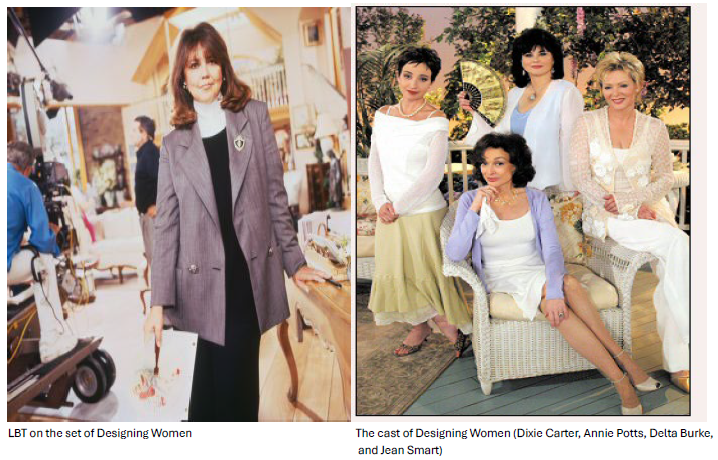
LBT continues in ‘Scrapbook,’ “Somewhere along the way, I began to like the symmetry of taking all the money I was making from having created these sassy, opinionated female characters on TV and sending it back home to girls, who, like my mother, were badly in need of a few ‘Atta-girls.’”
“Today, The Claudia Foundation is the financial umbrella for all our projects and philanthropies, ensuring that her legacy of love remains heart of everything we do.”
The Designing Women Foundation
Since 1989, the Designing Women Foundation has sent home hundred ninety-one women (and counting) to college. Providing full scholarships to institutions like Harvard and Duke, as well as state universities, and trade schools.
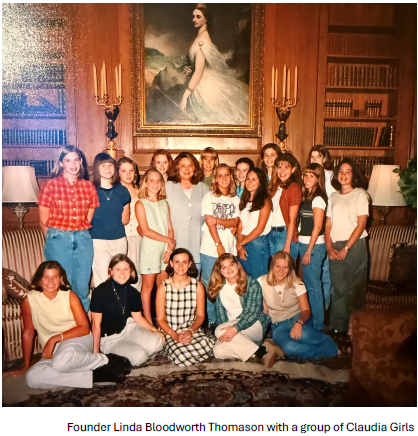
The Claudia Girls – Through the foundation, scores of Poplar Bluff High School aged young women (who met the requirements, including 1,000 hours of community service) have been able to take part in cultural and educational trips to the great capitals of Europe; as well as visits to numerous Broadway shows and the sound stages of Hollywood.
The Charlie Classics Reading Program – Named for LBT’s grandfather, the program offers an opportunity for every Poplar Bluff student, grades 7–12, to read the hundred greatest novels ever written. To date, three hundred and fifty-seven volunteer community mentors, along with dozens of English teachers, have helped forty-eight students achieve this monumental accomplishment.
Designing Kids Program – Supports underprivileged youth, including those in foster care and group homes, in Poplar Bluff, Southeast Missouri, and Northeast Arkansas. The organization provides mentoring, stewardship, clothing, and athletic outfitting, as well as psychological counseling, when needed. Founder and Director, Nate Newman, said, “our goal is to make every child feel like the Bloodworth House is their home. We celebrate monthly birthdays (with a party for everyone born that month), as well as all major holidays, including Easter, Thanksgiving, and Christmas, in which a five-item Santa list is fulfilled and presented at our annual Christmas Eve extravaganza.”

